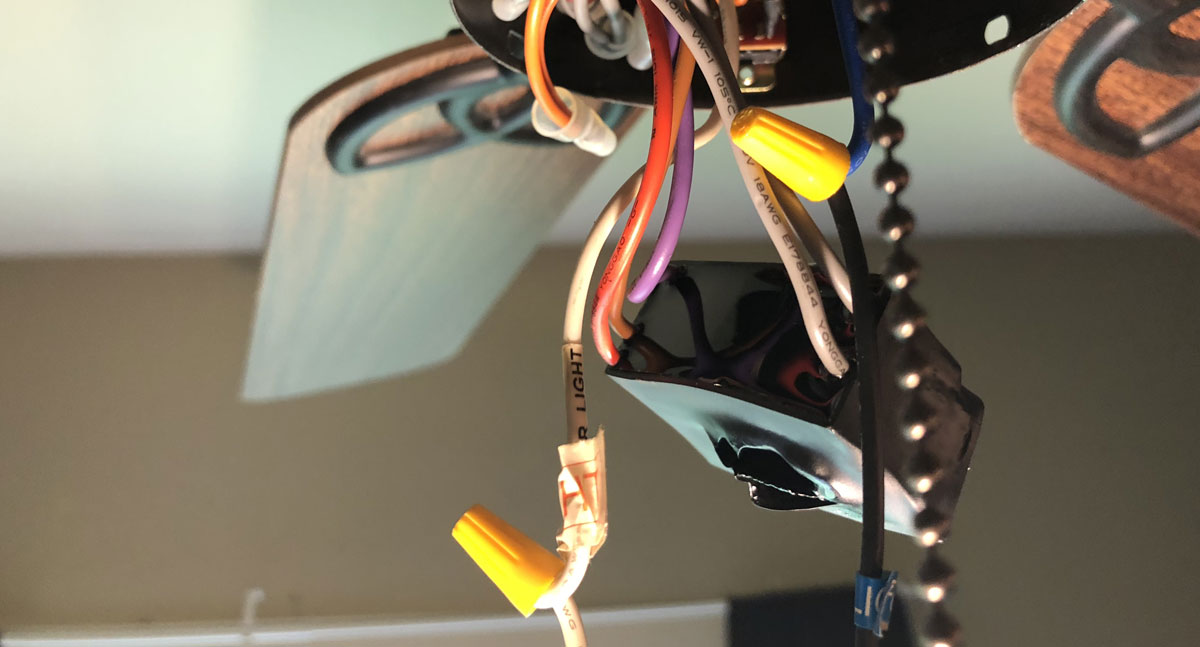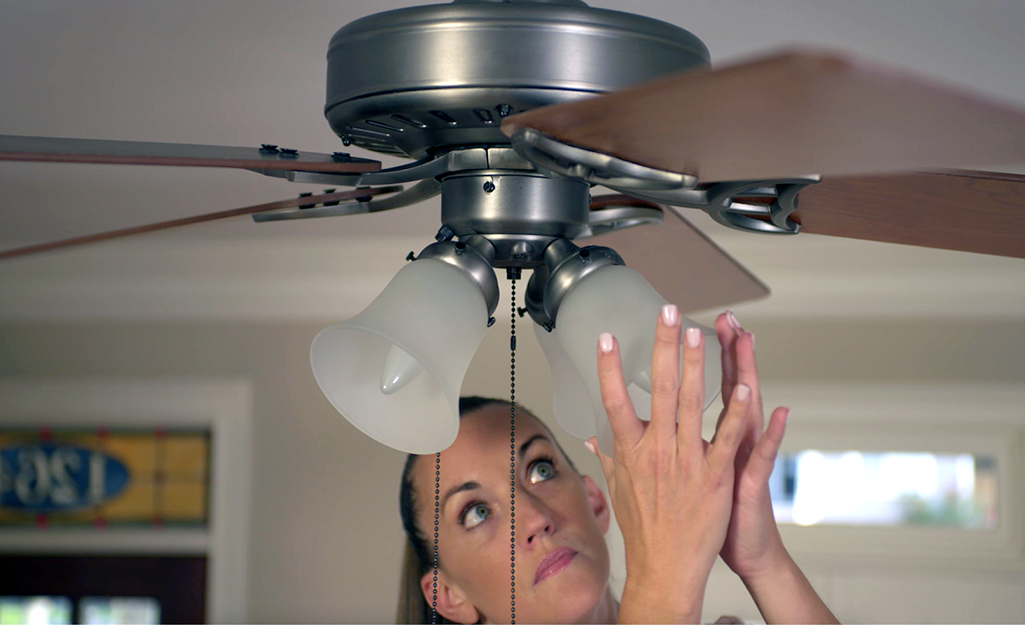First, check if the ceiling fan is receiving power. Next, inspect the fan’s wiring connections and switch.
A malfunctioning ceiling fan can be frustrating. This common household issue disrupts comfort and airflow. Begin by ensuring the fan has power. Sometimes, the problem lies with a tripped circuit breaker or a blown fuse. After confirming power, examine the fan’s wiring connections.
Loose or faulty wiring can prevent the fan from operating. Check the wall switch as well, as it may be defective. If the fan still doesn’t work, it could be an issue with the motor or internal components. Regular maintenance and timely repairs can extend your fan’s lifespan and improve its performance. Always prioritize safety and consider professional help if needed.
Initial Checks
When a ceiling fan stops working, conducting some initial checks can save time and effort. These simple steps can help you identify and fix the problem quickly.
Power Supply
First, check if the power supply to the ceiling fan is active. This is crucial because a fan won’t work without electricity. Follow these steps to verify:
- Ensure the wall switch is in the “ON” position.
- Check the circuit breaker. Make sure it hasn’t tripped.
- Inspect the fuse box. Replace blown fuses if needed.
If the power supply is fine, proceed to the next step.
Remote Control Batteries
If your ceiling fan uses a remote control, the next step is to check the remote control batteries. Dead batteries are a common issue. Follow these instructions:
- Remove the battery cover from the remote control.
- Take out the old batteries.
- Replace them with new, fresh batteries.
- Ensure the batteries are inserted correctly.
Test the remote again. If the fan still doesn’t work, the problem might be elsewhere.
Inspect The Blades
When a ceiling fan stops working, it can be frustrating. One of the first things to check is the blades. Inspecting the blades can help pinpoint the issue and potentially save you from buying a new fan.
Check For Obstructions
Ensure there are no objects blocking the fan blades. Obstructions can stop the fan from moving freely. Look for any debris or items that might be caught in the blades. Remove anything that could be causing a blockage.
Here are some common obstructions to look for:
- Dust buildup
- Loose screws
- Foreign objects
Blade Alignment
Check if the blades are properly aligned. Misaligned blades can cause the fan to wobble or stop. Use a measuring tape to ensure each blade is the same distance from the ceiling.
If the blades are misaligned, you can:
- Tighten the screws on the blade holders.
- Adjust the blade arms gently.
- Replace any bent or damaged blades.
Properly aligned blades help the fan run smoothly. This ensures better airflow and prevents damage.
Examine The Motor
When a ceiling fan stops working, it can be frustrating. One critical step is to examine the motor. The motor is the heart of the fan. If it’s malfunctioning, your fan won’t work. Follow these steps to identify and solve motor issues.
Overheating Signs
Overheating can cause the motor to fail. Feel the motor housing with your hand. If it’s too hot, the motor might be overheating. Overheating signs include:
- Burning smell
- Fan stopping suddenly
- Discolored motor housing
If you notice these signs, turn off the fan immediately. An overheated motor can be dangerous.
Motor Noise
Strange noises can indicate motor problems. Listen carefully for unusual sounds. Common motor noises include:
| Noise Type | Possible Issue |
|---|---|
| Buzzing | Electrical problem |
| Grinding | Worn-out bearings |
| Clicking | Loose parts |
If you hear these noises, you may need to repair or replace the motor. Ignoring motor noise can lead to bigger problems.
Control Switch Issues
When your ceiling fan stops working, it can be frustrating. One common issue is with the control switch. This can involve the wall switch or the pull chain. Let’s explore these problems in detail.
Wall Switch
First, check the wall switch. Make sure it is turned on. If it is on and the fan still doesn’t work, the switch might be faulty.
Use a voltage tester to check if power is reaching the switch. If there’s no power, the problem could be with the circuit breaker. Reset the breaker and test the switch again.
If the switch has power but the fan doesn’t work, you might need to replace the switch. Here’s a simple guide:
- Turn off the power at the breaker.
- Remove the wall plate and unscrew the switch.
- Disconnect the wires and attach them to a new switch.
- Screw the new switch into place and replace the wall plate.
- Turn on the power and test the fan.
Pull Chain
If your fan uses a pull chain, it might be broken. Check if the chain is stuck or disconnected.
Here’s how to fix a pull chain:
- Turn off the power at the breaker.
- Open the fan’s housing to access the switch.
- Inspect the chain for damage. If broken, replace it.
- Reassemble the fan and turn the power back on.
If the pull chain is intact but the fan doesn’t work, the switch inside might be faulty. Consider replacing the internal switch.
Capacitor Problems
When your ceiling fan stops working, the capacitor might be the issue. This small device helps your fan start and run smoothly. If it’s faulty, your fan may not work at all. Understanding how to test and replace the capacitor can save you time and money.
Capacitor Testing
Testing the capacitor is the first step. You’ll need a multimeter for this task. Follow these steps:
- Turn off the power supply to the fan.
- Remove the fan’s housing to access the capacitor.
- Disconnect the capacitor from the fan.
- Set your multimeter to the capacitance setting.
- Connect the multimeter probes to the capacitor terminals.
Check the reading on the multimeter. If it’s within the range specified on the capacitor, it’s fine. If not, you need to replace it.
Capacitor Replacement
Replacing the capacitor is straightforward. Here’s a quick guide:
- Purchase a new capacitor that matches the old one.
- Turn off the power supply to the fan.
- Remove the fan’s housing to access the capacitor.
- Disconnect the old capacitor carefully.
- Connect the new capacitor in the same way the old one was connected.
- Secure the fan’s housing back in place.
- Turn the power back on and test the fan.
Your fan should now work if the capacitor was the issue. If it still doesn’t work, another component might be faulty.
Important Tips
- Always turn off the power before working on the fan.
- Use a multimeter that can measure capacitance.
- Ensure the new capacitor matches the old one in specifications.
- If unsure, consult a professional electrician.

Credit: www.finnleyelectrical.com.au
Wiring Concerns
A ceiling fan that stops working might have wiring issues. Wiring concerns are common and can be fixed easily. Let’s explore some steps to address these concerns.
Loose Connections
One common issue is loose connections. Wires can become loose over time. This can cause the fan to stop working. Check if any wires are hanging or disconnected.
- Turn off the power to the fan.
- Remove the fan’s cover.
- Inspect all the wires carefully.
- Tighten any loose connections you find.
Wiring Inspection
An inspection of the wiring is crucial. Look for any damaged or frayed wires. Damaged wires can prevent the fan from working properly.
- Turn off the power supply to the fan.
- Take off the fan’s cover.
- Check each wire for damage.
- Replace any frayed wires you find.
Here’s a simple table to help you with the wiring inspection process:
| Step | Action |
|---|---|
| 1 | Turn off power |
| 2 | Remove fan cover |
| 3 | Inspect wires |
| 4 | Tighten or replace wires |
Professional Help
Sometimes, a ceiling fan stops working and needs expert attention. While minor issues can be handled by homeowners, some problems require professional help. Knowing when to seek professional assistance can save time and ensure safety.
When To Call An Electrician
Call an electrician if your ceiling fan shows electrical issues. Signs include:
- Fan not responding to the switch
- Burning smell or unusual noise
- Visible sparks or smoke
- Tripped circuit breaker
These issues indicate potential electrical faults. An expert can diagnose and fix the problem quickly and safely.
Cost Considerations
Understanding the costs involved helps in budgeting for professional help. Costs vary based on the issue’s complexity and the electrician’s rates.
| Service | Estimated Cost |
|---|---|
| Basic inspection | $50 – $100 |
| Minor repairs | $100 – $200 |
| Major repairs | $200 – $500 |
| Full replacement | $300 – $700 |
These estimates provide a general idea. Contact local electricians for precise quotes.
Consider the fan’s age and condition. Sometimes, replacing the fan might be more cost-effective than repairs.

Credit: www.homedepot.com
Maintenance Tips
When a ceiling fan stops working, it’s often due to neglected maintenance. Regular maintenance can keep your fan in top condition. Here are some essential maintenance tips to ensure your ceiling fan runs smoothly.
Regular Cleaning
Dust and dirt can affect your ceiling fan’s performance. Regular cleaning helps maintain its efficiency. Follow these steps:
- Turn off the fan and let it stop completely.
- Use a soft cloth or duster to wipe the blades.
- Clean the motor housing with a damp cloth.
- Vacuum the fan’s vents to remove hidden dust.
For better results, use a mild cleaner on the blades. Ensure the cleaner is suitable for the fan’s material.
Routine Inspections
Regular inspections can identify potential issues before they become serious. Here are some key areas to inspect:
- Blade Alignment: Ensure all blades are at the same angle.
- Loose Screws: Tighten any loose screws on the blades and motor.
- Electrical Connections: Check for secure and intact wiring.
- Fan Speed: Test all speed settings for smooth operation.
Perform these inspections every few months. This ensures your fan stays in good condition.
| Maintenance Task | Frequency |
|---|---|
| Dusting Blades | Weekly |
| Cleaning Motor Housing | Monthly |
| Vacuuming Vents | Monthly |
| Blade Alignment Check | Quarterly |
| Electrical Inspection | Quarterly |
Keeping up with these maintenance tips ensures your ceiling fan lasts longer. It also improves its performance and efficiency.

Credit: www.hunterfan.com
Frequently Asked Questions
Why Did My Ceiling Fan Stop Working?
Ceiling fans stop working due to electrical issues, motor problems, or switch failures. Check the power supply first.
How Can I Fix A Non-working Ceiling Fan?
First, ensure the power is on. Then, inspect the wiring, motor, and switch. Replace faulty parts.
What Tools Do I Need To Repair A Ceiling Fan?
You’ll need a screwdriver, voltage tester, wire strippers, and possibly replacement parts like switches or capacitors.
Can A Blown Fuse Cause A Ceiling Fan To Stop?
Yes, a blown fuse can interrupt power to the ceiling fan. Check and replace any blown fuses.
Conclusion
Fixing a ceiling fan is simpler than it seems. Follow the steps outlined to troubleshoot and resolve issues. Regular maintenance can prevent future problems. Always prioritize safety when dealing with electrical appliances. With these tips, your ceiling fan should be up and running in no time.

